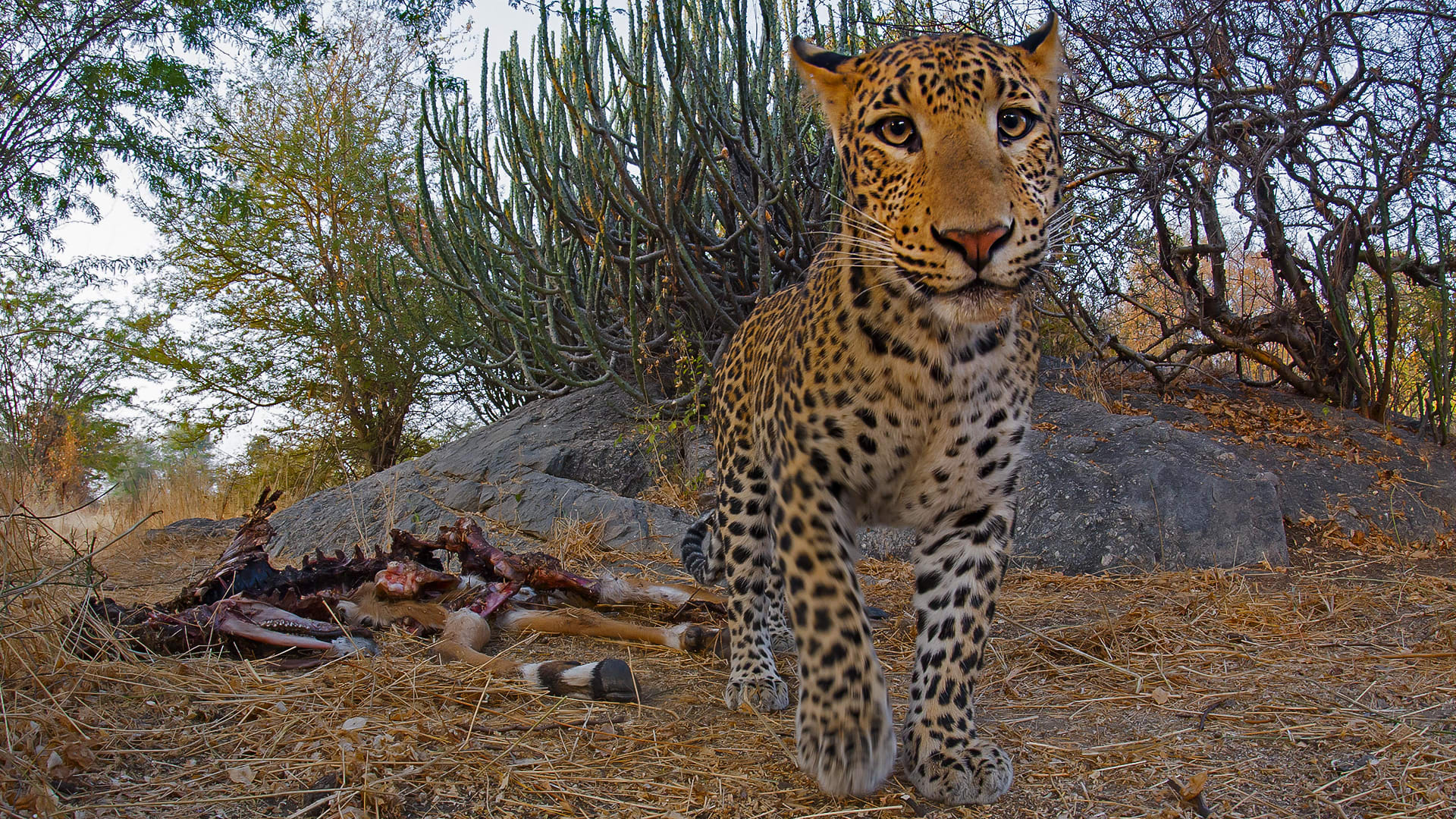 Listen to this article
•
15:34 min
Listen to this article
•
15:34 min
In Hirola, a little hamlet in Jawai, Rajasthan, amidst freshly raked cotton fields, stands a temple whose bells clang loudly at 6 am. Sharing a wall with the temple is a pink-coloured unfinished village house where 26-year-old Rajendra Singh Hirola (better known as Raju) lives with his family and other animals — some domestic, others wild. Two horses amble about, a few buffalos graze, a pit bull is tied to a neem tree, and sheep and village dogs saunter aimlessly. Two coppersmith barbets call incessantly from a nearby tree, a coucal flies overhead. Skittering frogs skip about the squelchy rainwater-filled waterbody outside the house.
Around 50 metres from the house is a small hillock. At first glance, it looks innocuous — like any other hill in the Jawai landscape. The hill is a mix of uneven and smooth rocks placed on each other and is dotted liberally with invasives like Prosopis juliflora and succulents like Euphorbia. Together, they create a unique arrangement of crevices and chambers offering secret hiding places to a variety of species. Various species coexist here and are in perfect sync with Raju’s family.
Wildlife photographer Dhritiman Mukherjee first visited Raju’s house in December 2014. Fascinated by how people and animals live here like compatriots, showing deep respect and tolerance for each other, Dhritiman has returned to his friend’s house multiple times. I tagged along with him on one trip to experience this landscape first-hand and, especially, to see the rusty-spotted cat.
We camp just outside Raju’s family home all morning and evening and witness many different species just metres away. All this while sipping cups of chai and snacks his family generously serves us.
Raju points to the wall outside his house and tells me it is quite new. For a very long time, there was only a makeshift fence of Prosopis thorns. “My first memory of seeing a leopard here was in 2006 when I was in Class 4. That’s when I began to realise how special this place is,” he says. Given that we didn’t have a fence, the leopards from the hill would constantly attack our livestock and take off with them.” he says, “Visits from the leopard used to delight me as a child. It was an event that caused me great excitement.” He tells me that eventually, his father sold off all the goats and sheep and bought buffalos instead to minimise the attacks. When I ask if the leopard attacks upset his family, he shrugs nonchalantly and says, “Of course, there were financial losses, but my father always said "Uska khana hai, woh toh khayega hi (It’s the leopard’s food, it’s bound to eat them.)”
“It’s amazing that we go to forests looking for all these creatures. And here we are, right outside Raju’s house, watching elusive small cats, owls, snakes, and birds,” says Dhritiman, who has spent much time in this exact place watching leopards over the years. “It’s a balanced ecosystem. And what makes it special is that they are accepting of each other. There is almost no separation between the wildlife outside their house and their own lives — which is really the most natural way to be.”
The Hirola family home is situated in the Chamunderi area in the semi-arid, rocky landscape of Jawai in Pali, Rajasthan. It is surrounded simultaneously by domesticity and wilderness. (1) A bird’s-eye view of the area shows the house, fields around it, desert shrubbery, and hillocks. (3) For Raju’s mother and sister, Pinka, seeing a leopard on the hillock from their backyard while flipping rotis is not an event worth reporting.
One night, our excitement on spotting the cryptic, rusty-spotted cat with her kittens on the hillock via torchlight was perfectly timed with the loud hissing sounds of the pressure cooker emanating from the family kitchen. We may have been surprised, but the cats remained unmoved.






On my first evening observing the hill, suddenly, around dusk, the entire area began to reverberate. The cicadas had claimed the evening. Often, the sound of the cicadas was so loud that we had to stop our conversation midway for the sound to drown out a little.
And amidst this diverse confluence of wild sights and sounds is a home and a family that is as much a part of this natural world as all the creatures we have seen and heard — living shared lives in a shared space. I asked Raju if he has ever thought of leaving Jawai and going to a city to work. “Jungle se mera bahut link hai (I feel a very strong connection with the jungle),” he says. “Nature me, ghar pe khushi milti hai. (I feel happy around nature and my house.) I can’t ever imagine living in a city.”
















